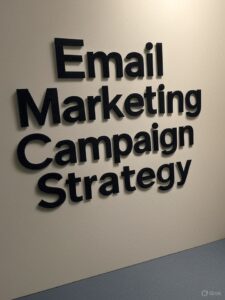Why Email is Super Important for Your Business
Have you ever wondered how businesses talk to their customers directly? One of the best ways is through email. Email marketing is like sending a personal message to many people. It helps db to data businesses share news about their products. They can also tell customers about special deals. This direct talk builds strong relationships. It helps businesses grow bigger. It is a very powerful tool.
Email marketing is not new. But it still works very well today. Think of it as a bridge. This bridge connects your business to your customers. It helps them remember you. They will think of you when they need something. This makes them happy customers. Happy customers often buy more things.
So, why is email so special? First, most people check their email every day. Second, you own your email list. Social media platforms can change their rules. But your email list stays yours. This gives you more control. You can talk to your audience anytime. It's a direct line of communication.
Starting Your Email Journey: First Steps
Before sending any emails, you need a plan. This plan is called a strategy. A good strategy helps you reach your goals. Without a plan, your emails might not work. They could end up in the junk folder. You want your emails to be opened. You want people to read them.
First, you need people's email addresses. This is called building your list. You can ask people to sign up. Put a sign-up form on your website. Offer something special in return. Maybe a free guide or a discount. This encourages them to share their email. Always ask for permission. Sending emails without permission is bad. It can make people angry.
Next, think about what you want to achieve. Do you want more sales? Do you want to share news? Maybe you want to teach people something new. Having clear goals is key. Your goals will guide your actions. They will help you measure success.
Getting to Know Your Audience Better
Understanding your audience is crucial. Who are the people on your list? What do they like? What problems do they have? Knowing this helps you. You can send them emails they will love. Imagine sending a message about dog food. But your reader has a cat. That email won't be useful to them.

So, how do you learn about them? You can ask them questions. Surveys are a good way. Look at your website visitors. What pages do they visit? What products do they look at? This gives you clues. Group your audience into smaller parts. This is called segmenting.
For example, you might have new customers. You might have old customers. Maybe some people are interested in one product. Others like a different product. Sending different emails to these groups is smart. It makes your messages more personal. This increases their interest.
Making Your Emails Look Good and Easy to Read
Once you know your audience, think about your emails. How should they look? They should be easy to read. Use clear and simple words. Avoid long, complicated sentences. Imagine you are talking to a friend. Keep it friendly and helpful.
The design matters a lot too. Use clear headings. Break up long paragraphs. Use bullet points for lists. This makes the email easy to scan. People are busy. They want to get the main idea quickly. Too much text can be overwhelming.
Also, make sure your emails work on phones. Most people check emails on their phones. If it looks broken on a small screen, they will close it. Test your emails on different devices. This step is very important. A good-looking email makes a good impression.
What to Write in Your Emails: Good Content Ideas
Now, let's talk about what to write. Your content must be valuable. It should help your readers. It should entertain them. Or it should solve a problem for them. Don't just always sell, sell, sell. Mix it up.
You can share helpful tips. You can write about new trends. Tell a story about your business. Show how your product helps others. Offer exclusive deals to email subscribers. People like feeling special. They appreciate unique offers.
Think about what your audience needs. What questions do they ask? What problems are they facing? Your emails can provide answers. This builds trust. When people trust you, they are more likely to buy. Always provide value.
Sending Your Emails at the Right Time
When should you send your emails? The timing can make a difference. There is no perfect time for everyone. It depends on your audience. Think about their daily routines. When are they most likely to check email?
You can test different times. Send emails on different days. See which times get more opens. Maybe your audience checks email in the morning. Or perhaps in the evening. Email marketing tools can help you track this. They show you statistics.
Consider how often you send emails too. Don't send too many. People might get annoyed. They might unsubscribe. Don't send too few either. They might forget about you. Find a balance that works for your audience. Consistency is important.
